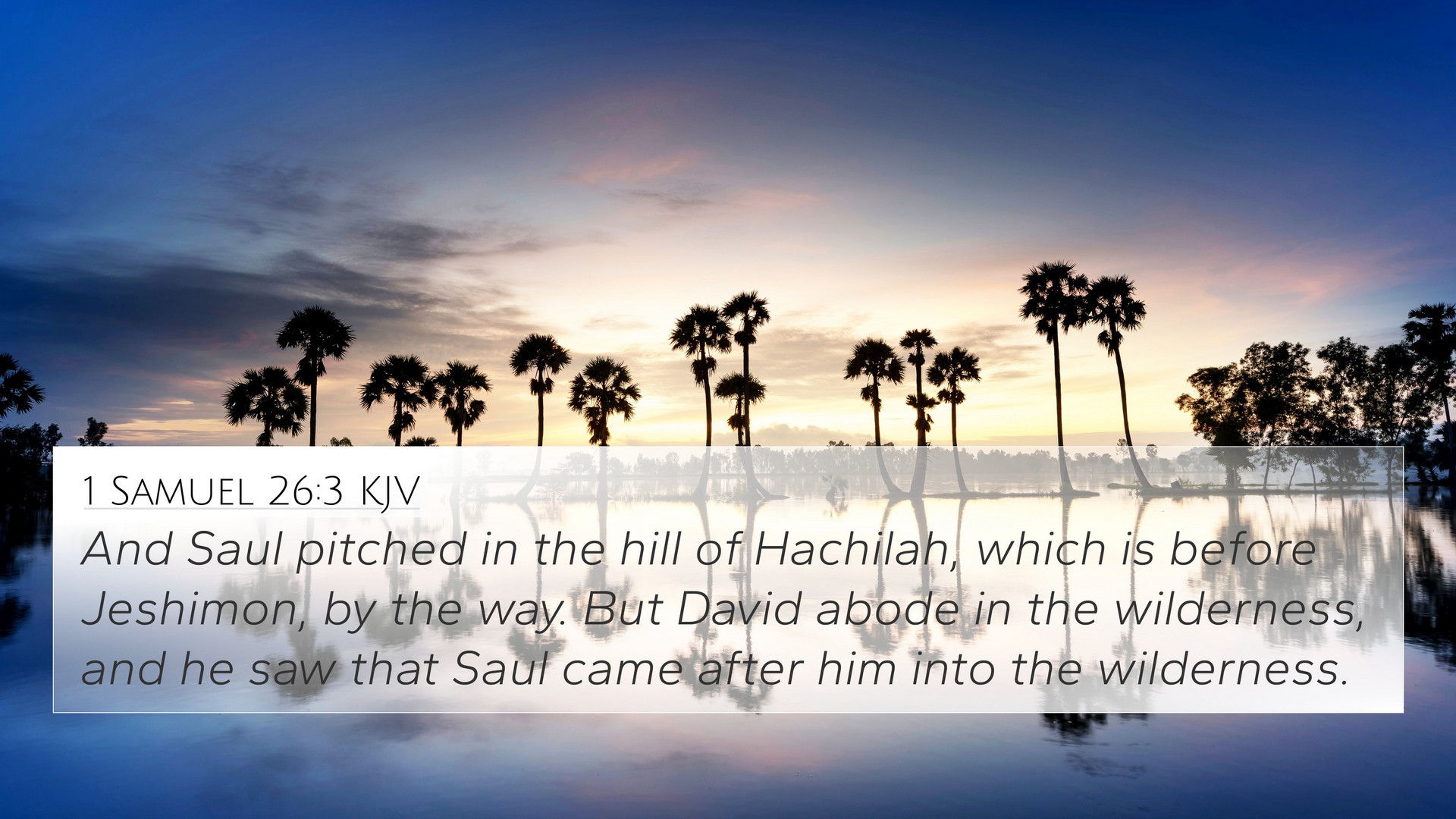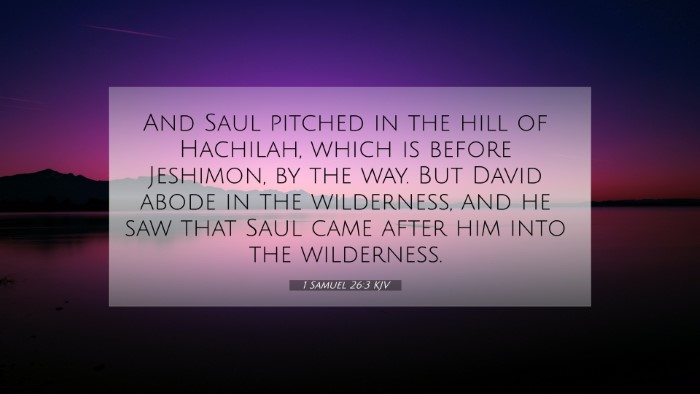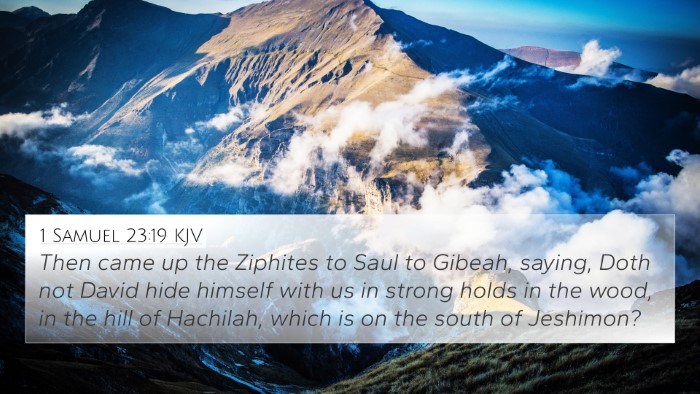Understanding 1 Samuel 26:3
Bible Verse: 1 Samuel 26:3 - "And Saul encamped in the hill of Hachilah, which is before Jeshimon: and David abode in the wilderness, and he saw that Saul came after him into the wilderness."
This verse introduces a significant moment in the ongoing conflict between David and King Saul. Through various public domain commentaries, we can draw out deeper meanings and implications of this scripture.
Contextual Analysis
Matthew Henry notes that David is portrayed in this verse as a man of insight and vigilance, aware of his adversary's movements. Saul’s continued pursuit of David, despite multiple previous opportunities to harm him, highlights the struggle between good and evil present in their relationship.
Albert Barnes emphasizes the strategic aspects of this narrative. The mention of the "hill of Hachilah" indicates not just a physical location but signifies the tension between David and Saul, as well as how close they are to each other in the wilderness. This geographic detail enhances our understanding of their conflict, illustrating a complex dance of pursuit and evasion.
Adam Clarke adds that the wilderness setting underscores the desolation faced by David. He was not merely fleeing, but enduring hardship, representing a spiritual trial that he faced in trust and faith.
Thematic Considerations
This verse raises several themes that resonate across the Biblical narrative:
- Pursuit and Deliverance: David’s flight from Saul encapsulates a broader Biblical theme of God’s protection over His anointed.
- Conflict Between Kings: This reflects the larger narrative about leadership, authority, and God’s sovereignty in appointing leaders.
- Wilderness Experience: The wilderness symbolizes both physical struggle and spiritual growth, a motif seen throughout scripture.
Cross-References
Several Bible verses can be cross-referenced with 1 Samuel 26:3, providing greater insight into its meaning:
- 1 Samuel 24:4: Describes a pivotal encounter where David spares Saul’s life.
- Psalm 57:1: A reflection of David's state of refuge during his wilderness experience.
- Psalm 52:1-4: Discusses the character of an enemy, which may relate to Saul's actions.
- 2 Samuel 1:24: A lamentation by David for Saul that highlights his respect towards the King.
- Matthew 10:16: Relates to being as wise as serpents, echoing David's strategic thinking.
- Romans 12:19: Understanding vengeance and leaving judgment to God, reflecting David’s restraint.
- Hebrews 11:32-34: Refers to David as a man of faith, showcasing his triumphs despite struggles.
Interpretative Insights
Examining 1 Samuel 26:3 through a comparative lens allows readers to uncover profound truths about faith and perseverance:
- Connections Between Characters: The dynamics between David and Saul mirror the struggles between righteousness and darkness in the broader Biblical narrative.
- Linking Scriptures: Understanding this moment in David's life leads to connections with New Testament themes of sacrificial leadership and obedience.
- Thematic Bible Verse Connections: Consider the ways in which spiritual tests lead to greater anointing, evident in David’s journey toward kingship.
Conclusion
In summary, 1 Samuel 26:3 serves not just as a historical recounting but as a rich tapestry of lessons on faith, strategy, and divine providence. By cross-referencing this verse with others, one can appreciate the connections and influences that span both the Old and New Testaments. Through a deeper engagement with the text and its surrounding context, believers can uncover fresh insights and enhance their understanding of God’s narrative through scripture.




